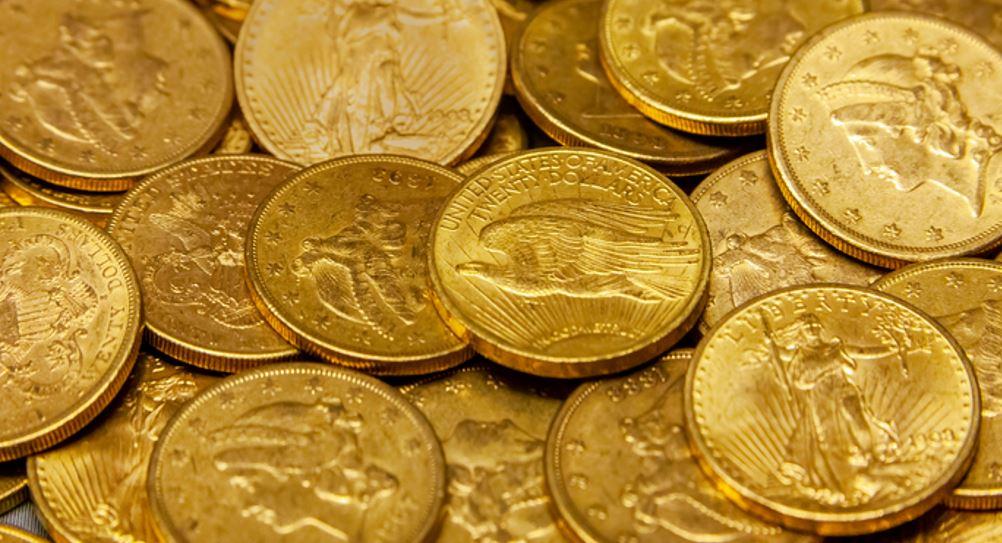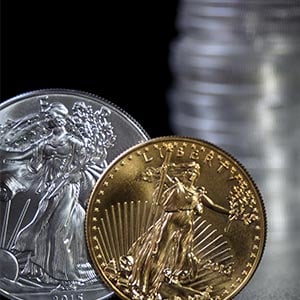The Russian central bank recently announced that it will stop buying gold at a fixed rate and will instead buy them at the negotiated rate from banks. Following the numerous sanctions which were imposed on Russia. The Ruble had fallen tremendously against the US dollar, to get out of such a situation it had announced that it would buy gold at a fixed price of 5,000 rubles a gram until June 30. Since that announcement, the ruble has strengthened sharply against the dollar for over one month. Five thousand rubles was worth around on March 25 and around on Thursday. The mechanism which led to the increase was to allow the markets to play themselves out, in order to combat sanctions, they asked the nations to transact in their currency which, due to the
Topics:
Vibhu Vikramaditya considers the following as important: 6a) Gold & Monetary Metals, 6a.) Gold Standard, Featured, newsletter
This could be interesting, too:
RIA Team writes The Importance of Emergency Funds in Retirement Planning
Nachrichten Ticker - www.finanzen.ch writes Gesetzesvorschlag in Arizona: Wird Bitcoin bald zur Staatsreserve?
Nachrichten Ticker - www.finanzen.ch writes So bewegen sich Bitcoin & Co. heute
Nachrichten Ticker - www.finanzen.ch writes Aktueller Marktbericht zu Bitcoin & Co.
 The Russian central bank recently announced that it will stop buying gold at a fixed rate and will instead buy them at the negotiated rate from banks. Following the numerous sanctions which were imposed on Russia. The Ruble had fallen tremendously against the US dollar, to get out of such a situation it had announced that it would buy gold at a fixed price of 5,000 rubles a gram until June 30. Since that announcement, the ruble has strengthened sharply against the dollar for over one month. Five thousand rubles was worth around $52 on March 25 and around $63 on Thursday.
The Russian central bank recently announced that it will stop buying gold at a fixed rate and will instead buy them at the negotiated rate from banks. Following the numerous sanctions which were imposed on Russia. The Ruble had fallen tremendously against the US dollar, to get out of such a situation it had announced that it would buy gold at a fixed price of 5,000 rubles a gram until June 30. Since that announcement, the ruble has strengthened sharply against the dollar for over one month. Five thousand rubles was worth around $52 on March 25 and around $63 on Thursday.
The mechanism which led to the increase was to allow the markets to play themselves out, in order to combat sanctions, they asked the nations to transact in their currency which, due to the extensive and growing array of sanctions by the western front, was becoming devalued by each day. It was here, by demanding payment in rubles, are attempting to increase demand for their currency which led to its increase where being pegged to hard currency allowed the confidence of the markets to increase so ruble wasn’t dumped extensively
But because once you allow for sound money such as gold pegged to your currency which is dictated by the effective allocating mechanism of the market you cannot ignore the market valuation any longer, therefore the bounce-back and effective strengthening of the ruble which took place more and earlier than expected has now forced them to abandon the fixed-rate currency and move towards a more flexible exchange rate mechanism which would allow them to set the rates effectively in line with the motivation of sellers while discounting for factors such as immediacy, global credit standing and the turns of the global economy.
A classical gold standard requires the central bank to exchange by the process of both purchasing and selling gold and the national currency for each other and to do so according to a fixed weight or quantity of gold per unit of currency. Thus, while neither the pegged currency nor the negotiated rates of exchange comprise the classical gold standard, they nonetheless serve as a great case study into the commendatory effects of having hard money serving as the medium of change in the economy.
In the much-celebrated book of his time, Tract on Monetary Reform, economist John Maynard Keynes urged the United States and Great Britain to abandon the gold standard, calling it a “barbarous relic.” In the decades that followed the book’s publication, countries around the globe heeded Keynes’ advice and relegated the gold standard to the dust bin. It is one of the great historical ironies that almost every advice of from Keynes was taken up by the world in the latter half of the 20th century and that none of the supposed benefits of stability, full employment have come to fruition.
The Problem of Gold standard in the Keynesian system
Keynes’s dictum on the gold standard has become the fountainhead of claims against a return back to the gold standard. Keynes in his analysis found the gold standard to be a barbarous relic of the past that was unscientific and unfit to meet the demands of a modern world. It is his arguments against the gold standard which have been repeated time and again, thus they serve as an excellent case for demonstration as to why the gold standard is superior based on the very allegations which are leveled against it.
Inflation and Gold standard
He wrote in his tract on monetary reform about the ills of inflation “ Inflation redistributes wealth…. Its most striking consequence is its injustice to those who in good faith have committed their savings to titles to money rather than to things…. Injustice on such a scale has further consequences…. Inflation has… destroyed the atmosphere of confidence which is a condition of the willingness to save….
Reading this one might form the opinion that the author of such lines might be highly unsavory and unscrupulous towards a monetary regime which causes destruction of the price mechanism and people’s stored up wealth through the artificial increase in prices but unfortunately one cannot do so without committing a grave error as both instances in modern history when prices have run amok namely the stagflation of the 70s and the massive rise in prices of around 10% today are both a result of Keynesian economics.
The most widely recognized virtue of the historical gold standard is its low average inflation rate. The rate of inflation was lowest, on average, under the gold standard when compared with the Bretton woods system of a pegged dollar and fluctuating system of fiat dollar reserve. (p. 30).
This was the era of the classical gold standard which lasted from 1880 to 1914, Inflation over this time period, while it fluctuated on a year-to-year basis, was virtually zero, and as a result, prices whose proper role lies in giving signals about market scarcity ensured proper allocation of resources due to which real income per capita in the United States increased by over 60 percent in a generation and a half. This low inflation is not a coincidence but a direct effect that is to be expected when the money supply is bound to the supply of gold. While the central bank can create thousands of dollars out of thin air to increase the money supply with its high stock to flow ratio, gold has the lowest price elasticity of supply, which is calculated as the percentage increase in quantity provided over price rise.
This implies the effects of the increased supply which would be prompted by increases in the price of gold through higher demand would be quite insignificant to cause changes in the absolute price level. For instance, the year 2006 witnessed a 36% rise in the spot price of gold. For any other commodity, this would be expected to increase mining output significantly to flood markets and bring the price down. Instead, annual production in 2006 was 2,370 tons, 100 tons less than in 2005, and it would drop a further
10 tons in 2007. (p. 34).
With changes in money supply being largely unaffected by changes in prices of gold, the general rise in prices which are caused when the supply of money is greater than the demand to hold it doesn’t occur. An economy where price increases are not caused due to an increase in money supply experiences price rise as a function of scarcity based on underlying consumer preferences which lead entrepreneurs to allocate resources properly in line with consumer demand.
Gold Standard and boom-bust cycles
A fiduciary media such as paper currency or bank deposits which are effectively used as the medium of exchange which is redeemable in gold enjoys certain properties which create a mechanism whereby artificial increases in money supply are either discouraged or its effects are reversed.
Suppose if commercial banks were to increase the supply of fiduciary media beyond what its coffers can handle, an increase in supply would first increase the cash balance holdings of its lenders who would when then start spending it on the various inputs of production thereby increasing its price, this increased price would accrue higher profits to the sellers of those inputs who would in-turn increase their output.
The process where sellers of inputs increase their input would lead them to hire more labor and capital goods which in turn would put further inflationary pressures on wages and other consumer goods when the rise in input prices are materialized into higher consumer goods prices.
Due to such an increase in prices, the goods of other economies would gain a competitive advantage over domestic ones which would lead to an increase in demand for gold to trade with other countries, as the demand for gold increases, the over-issued fiduciary media would find themselves back to banks who would then be put in dangers of bank runs and defaulting on their claim. This discipline of defaulting over time would root out banks that would have the habit of overissuing fiduciary media which is the source of an artificial unsustainable boom that eventually bursts and leads the economy towards a recession.
The same restrictions apply to the central banks as well where they can’t run an easy money policy without running the risk of a run on their reserves, given if a central bank lowers its lending rate of interest on its gold reserves to commercial banks in order to create a boom.
It would lead to capital outflows as investors would look to invest in countries where the interest rate is higher, this would mean that the demand for gold by investors to exchange it against foreign currency will increase. This outflow of gold reserves will decrease the quantity of money in the economy which will again lead to an increase in the rate of interest, therefore it not only means that the monetary policy would be rendered ineffective but also lead central banks to lose out on important gold reserves.
The problems of the pseudo gold standard
One of the greatest benefits of the gold standard lies in its ability to restrict and bind the hands of the government. This perhaps becomes most evident when one revisits the episodes of how the gold standard was one by one abandoned by all countries in line for preparation of war efforts of the first world war. Each country in order to build up reserves for arms and ammunition had to increase its defense spending which couldn’t take place under the restraining system which protects individual liberty. Once the war ended there were some attempts at coming back to the gold standard but since they were not based on the underlying dynamic of a market-based gold-currency exchange rate mechanism, it failed to restore the price stability and economic prosperity of the classical gold standard. Each of the countries that participated in the war thus spent huge amounts of money and had massively inflated their currencies, thus economic conditions had changed equilibrium exchange rates between national currencies, and hence gold parities should have been adjusted. If 1914 is taken as the base (= 100), wholesale prices in December 1918 were as follows: USA 202, France 355, UK 246.
After the war in 1918, the USA immediately announced that it would maintain the dollar price of gold at its prewar level. That is, it is willing to export gold at $20.67 per ounce. It was thought that Britain’s national honor was at stake. Failure to restore the prewar parity of the pound would undermine confidence in the pound.
Accordingly, Britain resorted to a deflationary policy and restored the value of the pound to its pre-WW1 levels, this turned out to be a disaster for the British economy and other economies connected to it. Artificially lowering the value of the pound despite the increased money supply during the war period distorted the entire structure of prices whose role is to guide entrepreneurs, it could be compared to a situation wherein amid congestion of traffic, the signals reflect guidance for coordinating yesterday’s traffic.
The USA was able to survive the artificial deflation on the account of its massive gold reserves which had grown during the war and the piling up of debt that countries owned to the United States. This allowed the USA to pursue an easy money policy which first sparked a temporary boom and then characteristically culminated in a bust. This mechanism was explained most adequately by Rothbard in his seminal work America’s Great Depression. Had the currencies been allowed to change as per a fixed weight of gold units per unit of currency, the picture may well have been different.
Conclusion
Keynes began his mission to enunciate his system of economics where the invisible hand of the market will be replaced by the visible hand of policymakers where an increase in government spending through the increase in aggregate demand as a result of the multiplier mechanism will provide full or near full employment. But before such a project could be undertaken, it was important to show why the gold standard fails to provide an order to the society as the foundations of his economic system relies on the fact that a country has independence in monetary and fiscal matters where it is not directly affected by the policies of other economies. There can be no such thing as a Keynesian state on the gold standard, any more than a cocaine addict or compulsive gambler can be on a strict budget.
But now on the backs of substantial evidence and analysis, it becomes quite clear that not only was Keynes incorrect about the question of instability of the value of money and on the gold standard as a monetary system. A stronger case has also been made to show the classical gold standard is superior on every front and a return to the gold standard will cure several economic ills of inflation, improper allocation of resources, and a continuous cycle of booms and busts. This now calls into question a reevaluation of the entire foundation of the fiat money system along with the Keynesian worldview.
Tags: Featured,newsletter







